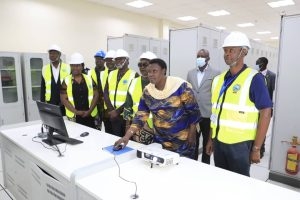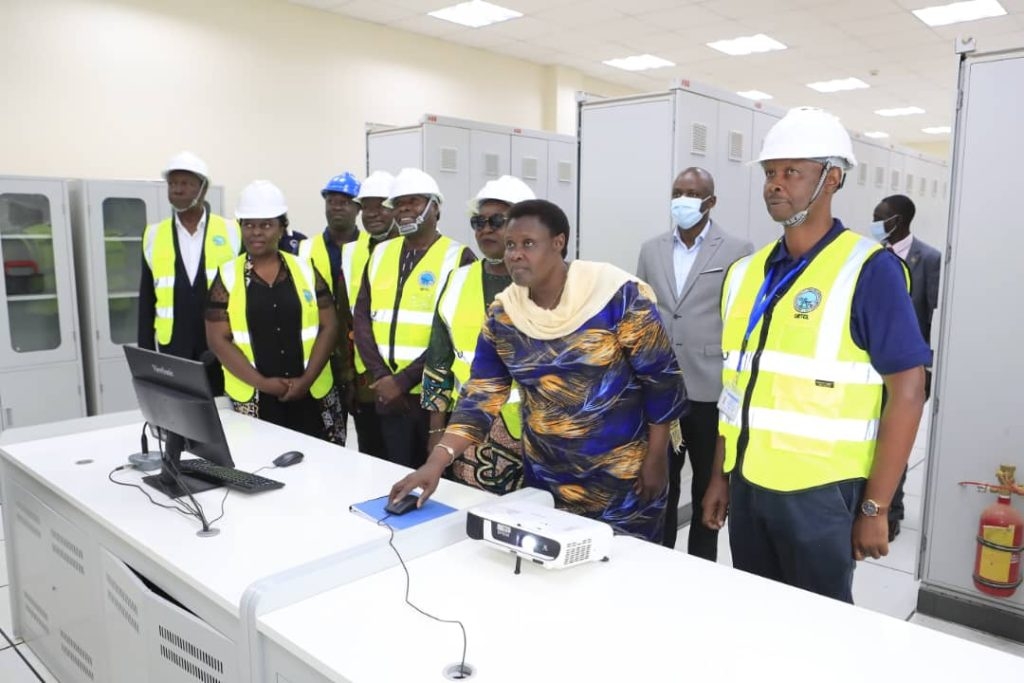The Patriot Corps
The Vice President of Uganda, Maj. (Rtd) Jessica Alupo, yesterday inaugurated the 132kV/33kV Arua power substation, enhancing the electricity supply to the West Nile region. This development follows President Yoweri Museveni’s recent commissioning of the 132kV Nebbi substation, culminating in the connection of the West Nile sub-region to the national high-voltage grid.

The 132kV Kole–Gulu–Nebbi–Arua Transmission Line can deliver over 200MW of power to West Nile, with both the Nebbi and Arua substations boasting a capacity of 80MVA each. Speaking on behalf of President Museveni, Vice President Alupo highlighted the significance of the project: “By connecting the West Nile region to the national grid, we can evacuate electricity from key power projects such as Karuma, Agago/Achwa, and Nyagak I and III. This will not only meet the region’s unserved demand but also stimulate economic growth, improve livelihoods, and foster industrial development.”
Alupo emphasized the critical role of energy development in enabling industrialization and advanced agricultural production, noting its impact on reducing business costs. “The availability of energy facilitates the establishment of rural industries, aligning with the NRM’s goal of building a self-sustaining manufacturing sector based on locally available raw materials,” she stated. She also underscored the environmental benefits, such as reducing reliance on wood fuel for domestic purposes.

Reflecting on the energy challenges faced by Uganda when the NRM came to power in 1986, Alupo recounted how the country’s hydro-electricity generation capacity was a mere 165 megawatts, with only 60 megawatts being generated. The commissioning of Karuma and Isimba Hydropower Plants has now increased generation capacity to over 2,000MW. Alupo mentioned the preliminary stages of Uganda’s Nuclear Energy Programme, aiming for 8,400MWe of nuclear energy in Buyende District to meet future demands.
Alupo noted that current hydropower capacity would be outstripped by 2028 due to increasing industrialization. Thus, the government is scaling up investments in new generation capacity. She also highlighted the growth in electricity transmission capacity, from 3,500KM to 4,218KM of high voltage by 2019/20, with ongoing efforts to fast-track transmission lines to load centers such as mining and industrial parks.
She called on leaders to mobilize the populace to utilize the reliable power supply for producing goods and services across sectors like commercial agriculture, industries, services, and ICT. “The necessary socio-economic infrastructure to spur Uganda’s transformation from a predominantly peasant society to a modern economy is in place. Uganda boasts tarmacked roads, ample electricity supply, and an ICT backbone,” she remarked, emphasizing the importance of infrastructure in creating jobs and wealth.

The Kole-Gulu-Nebbi-Arua 132kV transmission line, financed by the World Bank and the Government of Uganda, aims to reinforce supply to the West Nile region. Minister of Energy and Mineral Development Ruth Nankabirwa explained that the project’s objective is to increase the availability and efficiency of bulk electricity supply, enabling the evacuation of power from Karuma, Agago/Achwa, and Nyagak projects to meet regional demand.
Geoffrey Feta, Chairperson of the West Nile Parliamentary Caucus and Ayivu East Member of Parliament, lauded the development as a transformative change for West Nile, urging the government to extend power benefits to local grassroots beneficiaries.


